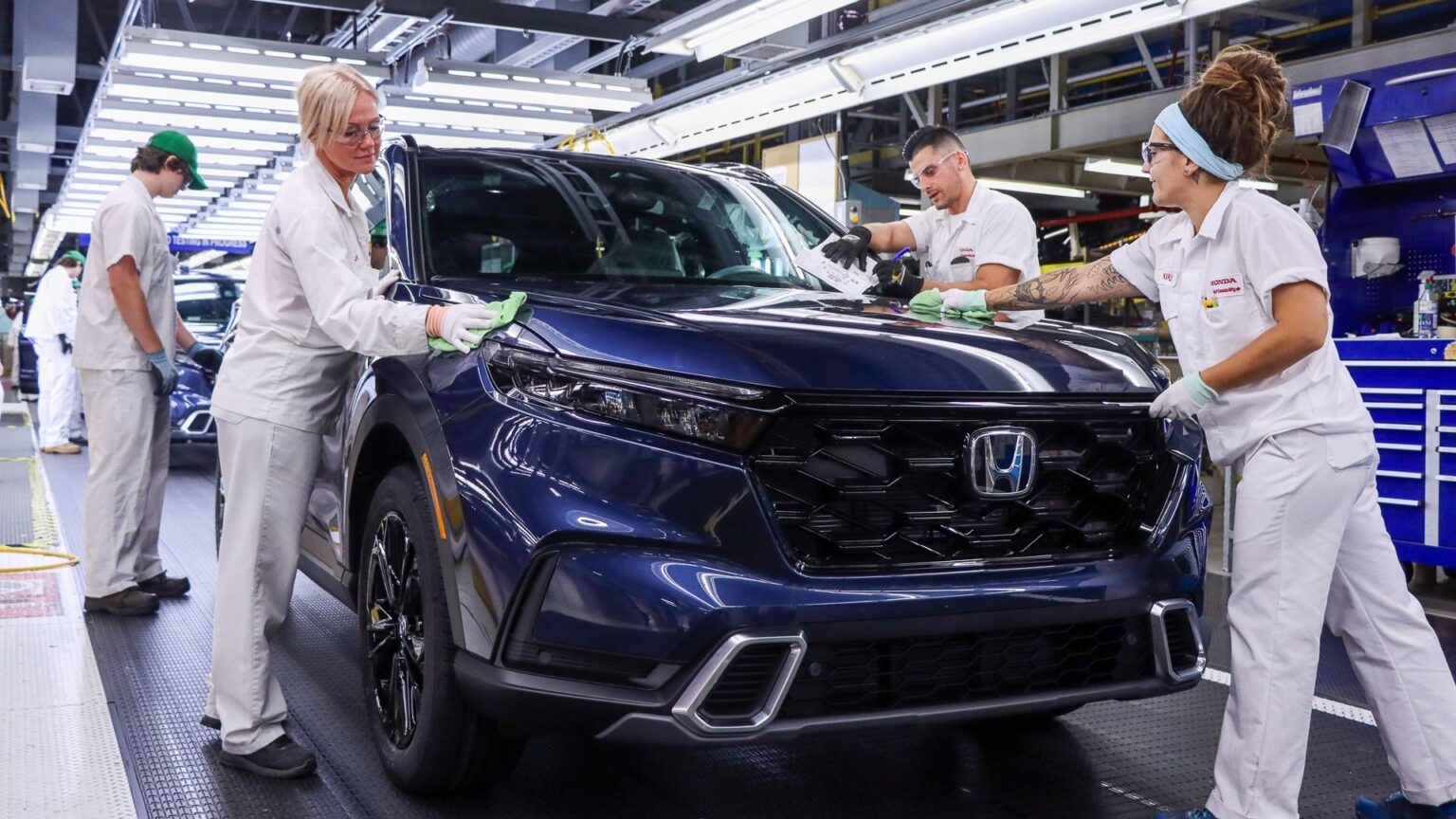Honda has fired back at reports that its plant in Ontario, Canada, is set to move production to the United States in response to the Trump administration’s tariff trade war.
Honda’s Ontario Plant “Will Operate At Full Capacity”
In an official statement, Honda Canada confirmed that its Honda of Canada Mfg. (HCM) plant in Alliston, Ontario, which currently employees upwards of 4,000 Canadian workers, “will operate at full capacity for the foreseeable future,” as indeed will its Canadian production as a whole, and that “no changes are being considered at this time.”
This follows a similar announcement from Honda Canada on 3 April, one day after the U.S. government announced a 25-percent tariff on all non-U.S.-made cars being imported from Canada and Mexico, that the Alliston plant “remains operational” as the brand took “a measured, thoughtful approach” said tariffs would have on Honda’s sales in the United States.
Why Honda’s Clarification Was Needed
Concerns rose earlier this week, based on a report from Japan’s Nikkei newspaper, that the Japanese marque was considering switching production from Canada and Mexico to the U.S., with the report even speculating that Honda was now aiming for up to 90 percent of its products sold in the U.S. to be built locally. Honda, meanwhile, suggests that any rumors regarding production stoppages and/or relocation could be down to the Japanese marque’s focus on “future contingency planning” and “short-term production shift strategies,” given that its Canadian production hub allows the brand to “make coordinated production shifts” for its vehicles depending both on customer demand and market fluctuation.
Alongside Honda’s official statement, Ontario Premier Doug Ford and Innovation Minister Anita Anand have both called the Nikkei report inaccurate, the latter stating on social media that production changes “are not being considered at this time.”
Why Initial Concerns Were Warranted, And Honda’s EV Investment
The Trump administration’s imposed tariffs have already led, directly or indirectly, to temporary plant closures for at least two major manufacturers in Ontario, with many expecting Honda to follow a similarly disastrous path. Stellantis, for example, recently halted production of its minivan fleet and the electric Dodge Charger at its Windsor plant (though this is due to reopen on 21 April), while Chevrolet has shuttered its BrightDrop electric parcel van plant in Ingersoll until at least October, and only after, what is said to be, up to 500 layoffs. A justified concern for the 4,000-plus workers currently employed at HCM to say nothing of Honda’s Canadian dealership network, especially since the Japanese marque recently confirmed production of the Civic was shifting from Mexico to Indiana.
Such a move, however, would also fly in the face of Honda’s recent commitment to its production hub in Canada. The brand confirmed in February that a massive, $15 billion USD investment was being made into the company’s electric vehicle production in Ontario, with a “comprehensive” battery supply chain also being planned for 2028.
Strong Start To 2025 For Honda Of Canada Mfg
Currently the second-largest automaker in Canada (behind only Japanese rival Toyota), Honda produces “approximately” 69 percent of all its vehicles sold in Canada nationally, with all but one percent of Hondas sold in Canada sourced from within North America. In a strong start to its year, Honda’s Canadian sales during the first quarter of 2025 are up 9 percent compared with the same timeframe last year, and was a key part of Honda North America’s “best March ever” as Q1 sales went up 13.9 percent. It should also be noted that both the Civic and the CR-V hybrid SUV, Honda’s two biggest sellers, are both built out of Alliston, Ontario, with production of the Civic having run uninterrupted there since 1988, just two years after the HCM plant was opened.
Read the full article here


